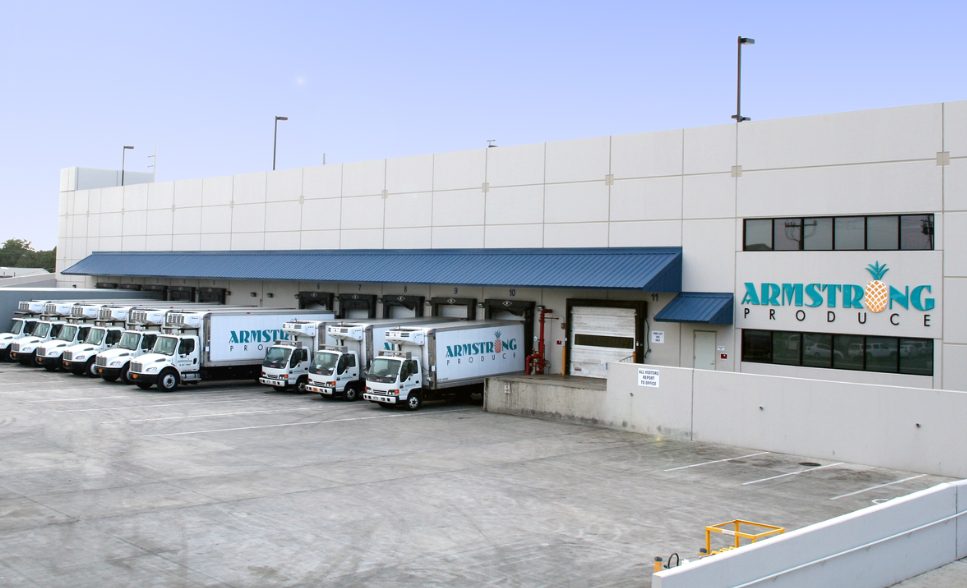A company that has grown from a small family-run business to handling more than 600 orders daily, Armstrong Produce needed to scale its business with a Warehouse Management System (WMS) to improve its operations efficiency and accuracy. However, in order to make full use of the WMS, the Hawaiian wholesaler and distributor of fruits and vegetables first had to install a wireless enterprise system.
After deploying the ExtremeManagement wireless solution from Extreme Networks and successfully transitioning from paper picking to digital picking, Armstrong achieved:
- A 75% reduction in shipping errors;
- Labor cost savings of an estimated six figures per year;
- Operational savings of $3,120 per year on paperwork alone; and
- A wireless network that covers 87,000 square feet, 226 network users and devices and three warehouses on three separate islands.
“The almost instantaneous flow of information was really important to maximize the benefits of the WMS,” said Les Watanabe, Assistant Director of Operations at Armstrong Produce in an interview with Retail TouchPoints. “Everything is so transparent now and the amount of detail given in each order is terrific. Not only does it help with information flow, but productivity in labor hours has increased tremendously. It’s so transparent that the errors are easily traceable.”
Back in 2011, Armstrong Produce used “paper pick tickets” for each order. This required handwriting lot numbers and using line-by-line shipping information for each item manually, so the process was prone to error. Armstrong wanted a better system that would allow the company to increase its picking productivity, minimize shipping errors, streamline order checking and ensure traceability for all their customers.
“We’re talking about orders for hotels and small restaurants,” said Jingjing Verzosa, Systems Director at Armstrong Produce in an interview with Retail TouchPoints. “We’re picking a pound of lemon or a pound of orange, and since we’re required to do traceability on each order that we ship to all our customers, we had to write down every single lot number on that paper. We were using pick tickets for everything that we ship to customers, and [then] we’d input it into a computer.”
The Armstrong picking team now uses Motorola handheld devices and tablets to track items throughout the warehouses, which Verzosa said requires a much simpler training process, especially since most of the employees are Millennials.
“Through the system that we have, the device takes you right to the location of the right product,” Verzosa said. “It takes you to whatever they have to pick. We could assign lot numbers on the handhelds so there’s no need for them to be introduced to the products, or no need for them to be familiar with the items that they’re picking. They just need to identify the product quality.”
Quality Assurance, Delivery Timeliness Gets An Added Boost
With the additional labor hours freed up by the transition, the Armstrong team has more time to check the quality of produce in individual shipments more thoroughly. Additionally, the company no longer has delivery drivers waiting around for shipping loads to be dealt.
“They’re on the road rather than waiting at the warehouse,” Watanabe said. “Customers are receiving more timely deliveries. Because our system is just-in-time across the board, whenever we can save upstream, everything affects it downstream. Often, products will get to a customer within 24 hours of receipt. In produce, everything we’re sending has a shelf life, so that’s really important.”
Over the past three years, the produce company also has been able to cut down on shift times. Armstrong operates two shifts: a night shift when 80% of the orders are made, and a day shift that often covers late orders and backorders. Before the WMS implementation, the day crew would show up at 3 am, even though the night crew often didn’t finish until 5 am. After the wireless infrastructure and WMS implementation, if the night crew stays until 1 am, “It’s a busy day. They’re staying late,” said Watanabe.
In addition to enabling the company to implement their WMS, the Extreme wireless network has made it possible for Armstrong to introduce new technologies, such as a building access control system, time keeping system, security cameras and smart TVs.
Going forward, Armstrong Produce plans to use the ExtremeManagement solution beyond network visibility, using reporting and analytics features to troubleshoot and gain greater control over the network’s users and devices.













